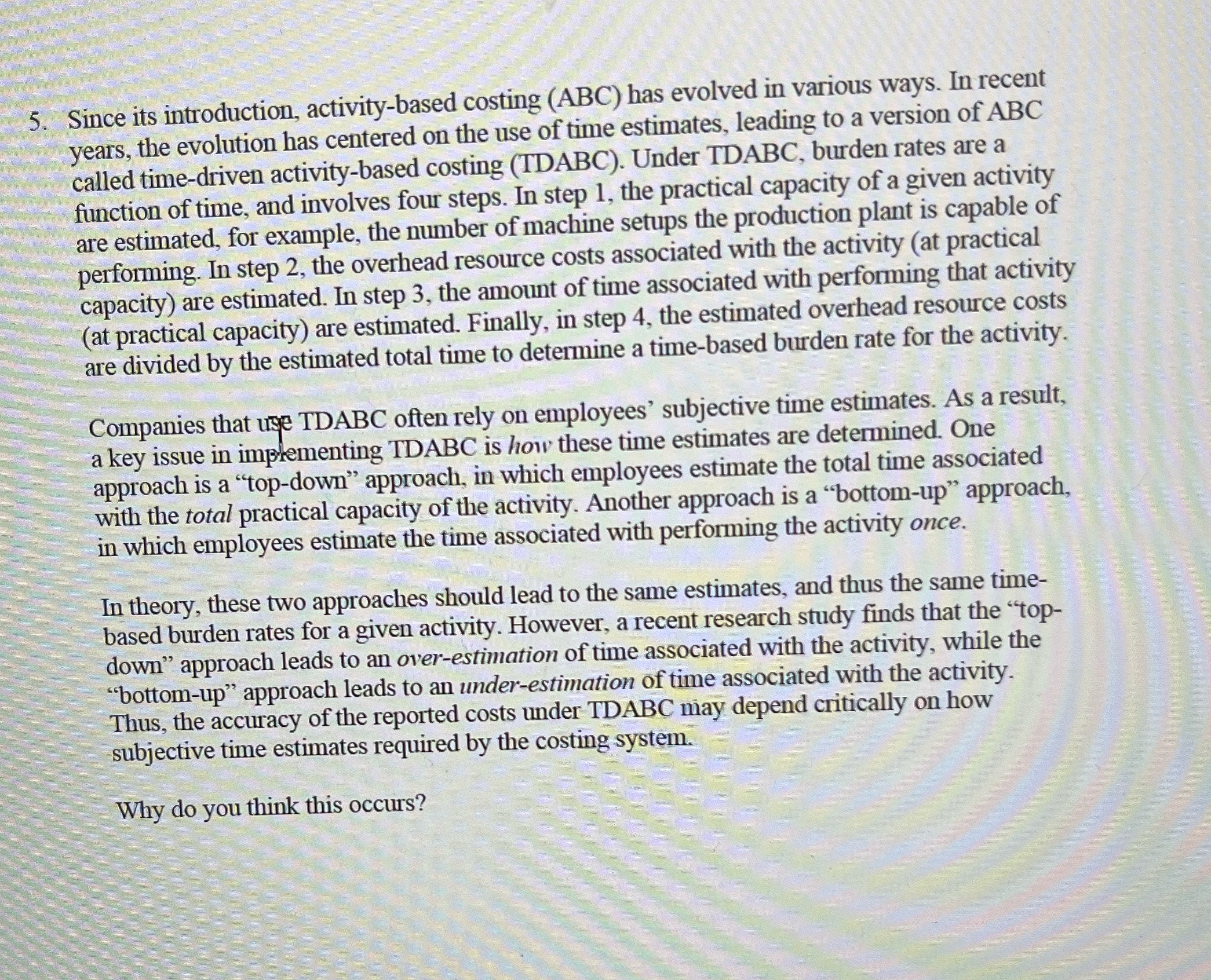Answered step by step
Verified Expert Solution
Question
1 Approved Answer
5. Since its introduction, activity-based costing (ABC) has evolved in various ways. In recent years, the evolution has centered on the use of time

5. Since its introduction, activity-based costing (ABC) has evolved in various ways. In recent years, the evolution has centered on the use of time estimates, leading to a version of ABC called time-driven activity-based costing (TDABC). Under TDABC, burden rates are a function of time, and involves four steps. In step 1, the practical capacity of a given activity are estimated, for example, the number of machine setups the production plant is capable of performing. In step 2, the overhead resource costs associated with the activity (at practical capacity) are estimated. In step 3, the amount of time associated with performing that activity (at practical capacity) are estimated. Finally, in step 4, the estimated overhead resource costs are divided by the estimated total time to determine a time-based burden rate for the activity. Companies that use TDABC often rely on employees' subjective time estimates. As a result, a key issue in implementing TDABC is how these time estimates are determined. One approach is a "top-down" approach, in which employees estimate the total time associated with the total practical capacity of the activity. Another approach is a "bottom-up" approach, in which employees estimate the time associated with performing the activity once. In theory, these two approaches should lead to the same estimates, and thus the same time- based burden rates for a given activity. However, a recent research study finds that the "top- down" approach leads to an over-estimation of time associated with the activity, while the "bottom-up" approach leads to an under-estimation of time associated with the activity. Thus, the accuracy of the reported costs under TDABC may depend critically on how subjective time estimates required by the costing system. Why do you think this occurs?
Step by Step Solution
There are 3 Steps involved in it
Step: 1
Answer The discrepancy between the topdown and bottomup approaches in estimating time associated with activities under timedriven activitybased costin...
Get Instant Access to Expert-Tailored Solutions
See step-by-step solutions with expert insights and AI powered tools for academic success
Step: 2

Step: 3

Ace Your Homework with AI
Get the answers you need in no time with our AI-driven, step-by-step assistance
Get Started


